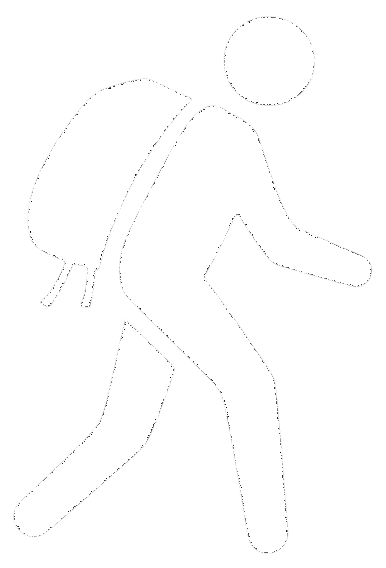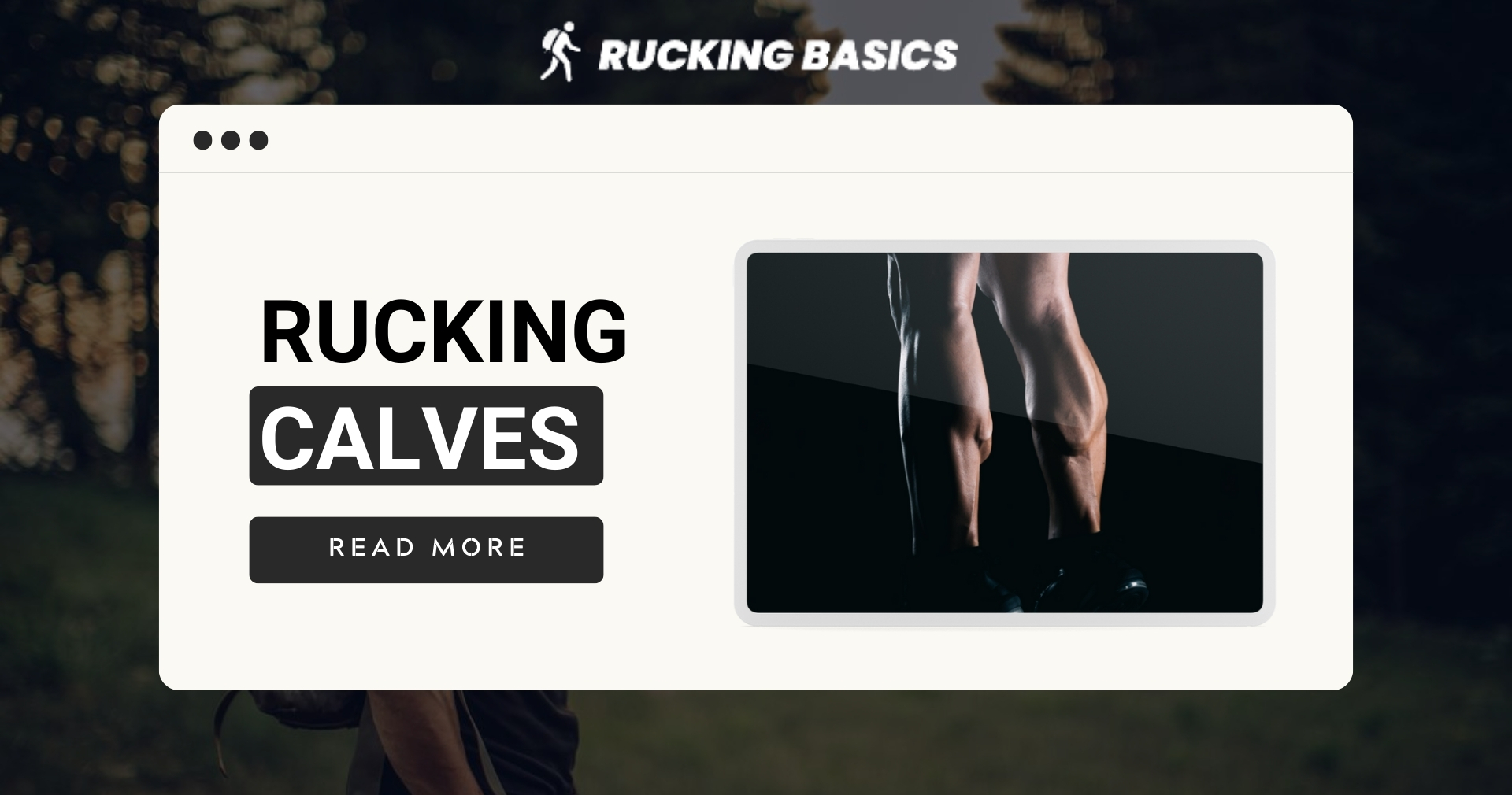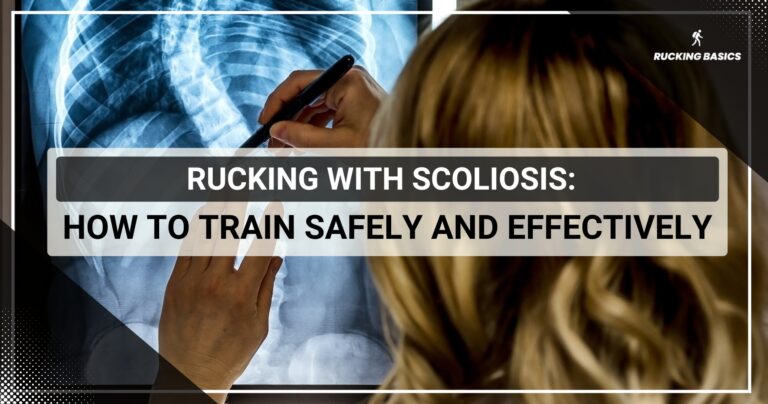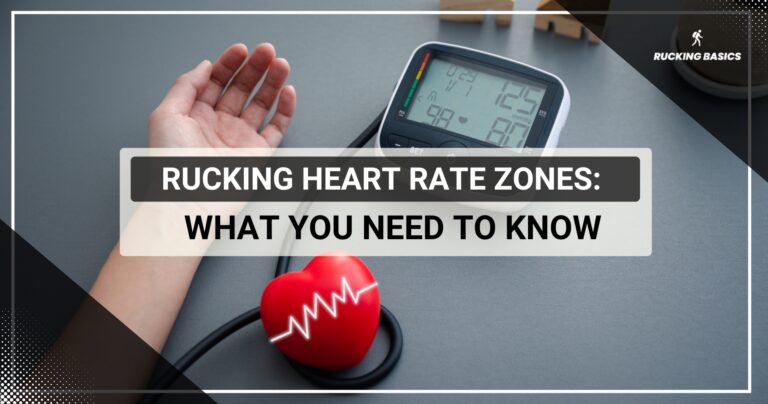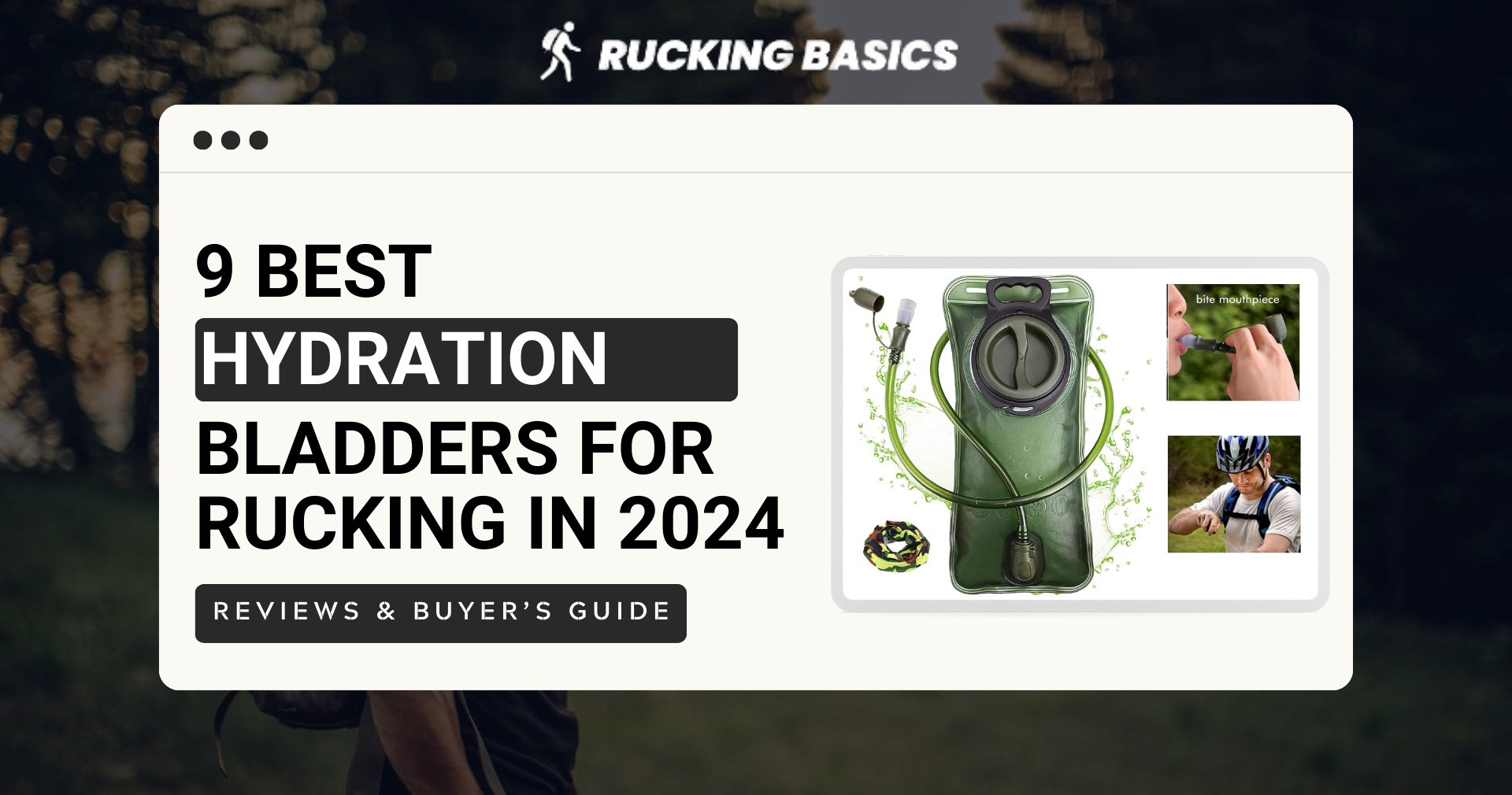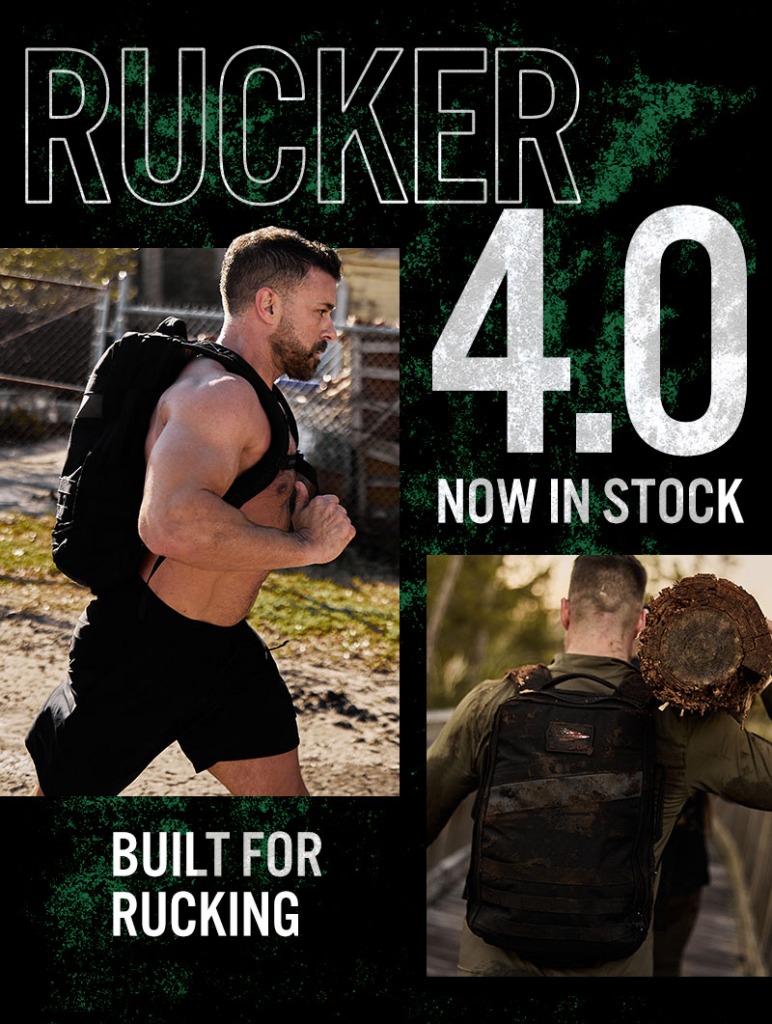Most people focus on the weight they’re carrying or the miles they’re covering, but one part of the body often goes unnoticed: the calf muscles.
Without strong and resilient rucking calves, even the most determined ruckers might struggle with fatigue, cramping, or worse—serious injury.
Join us as we explore why calf muscles are more critical to your rucking success than you might think. We’ll dive into how rucking specifically targets and strengthens these muscles, the importance of preventing calf injuries, and how to distinguish between normal soreness and signs of overuse. By the end of this guide, you’ll have knowledge needed to protect and strengthen your calves for the best rucking experience possible.
Anatomy of the Calf Muscles
There are two primary lower leg muscles: the gastrocnemius and the soleus. The gastrocnemius is the most visible muscle since it is superficial and gives the calf its characteristic shape. It spans from just below the knee to the heel and primarily works in explosive movements such as sprinting, jumping, and quick direction changes. Its function is crucial for powerful bursts of activity and providing the push-off force.
Beneath the gastrocnemius lies the soleus, a flatter, deeper muscle that extends from the back of the shin to the heel. You can only see it from the side. According to some studies, this muscle is able to generate more force than any other.
Unlike the gastrocnemius, the soleus is mainly responsible for prolonged, steady activities. It supports endurance activities, which is key for walking and rucking. The soleus stabilizes the ankle joint and maintains a consistent pace. It is often neglected, and calf exercises usually focus on the gastrocnemius.
Calf Muscle Function During Rucking
The gastrocnemius is activated each time you push off the ground. Meanwhile, the soleus works in tandem to maintain a steady, efficient stride over long distances. Both are necessary so that the pace remains consistent. If one is injured, you won’t be able to handle the load.
Getting Stronger Calves with Rucking
You have to take care of many aspects in order to maximize your calf development.
Volume: Finding the Right Load
When starting, choosing a load that challenges your muscles without overwhelming them is essential. Begin with a lighter pack and increase the weight as your calves adapt and grow stronger. The key is progressive overload (the same as in the gym) — adding just enough weight over time to stimulate muscle growth without risking overtraining or injury.
Don’t forget that rucking works other muscle groups, too. For example, your abs get a solid workout during a ruck as they stabilize your torso and help distribute weight efficiently. Learn more about the benefits of strong rucking abs and how they contribute to better overall performance.
Speed: The Impact of Pace on Calf Development
How fast you ruck plays a significant role in the type of muscle fibers you engage in your calves. You have to vary your pace to target different fibers within your muscles.
When you increase your rucking pace, your gastrocnemius is put to the test as it handles explosive, fast-twitch movements. Slowing down to a moderate pace, on the other hand, shifts the focus to your soleus, which relies on slow-twitch fibers to maintain endurance over long distances.
Terrain: Maximizing Calf Engagement
Flat surfaces offer a consistent challenge, but varied terrain—like hills, trails, and uneven ground—forces your calves to work harder. Inclines demand powerful contractions from the gastrocnemius, while declines and uneven paths engage the soleus and stabilize muscles more intensely.
Frequency: How Often Should You Ruck?
Rucking too often can lead to overuse injuries, particularly in the calves, which are prone to strains if not given adequate time to recover.
But rucking too infrequently will not provide the consistent stimulus needed for muscle growth. And remember, it’s not just about the number of rucks you complete. The quality and intensity of each session will determine your progress and how often you should ruck.
Incorporating Gym Strengthening
Rucking is a powerful way to build calf strength, and I always advocate that the activity itself will best develop certain muscles for specific needs. Yet, adding targeted strength training can accelerate your progress and address any muscle imbalances.
Exercises like standing and seated calf raise focus directly on the gastrocnemius and soleus, promoting muscle hypertrophy and strength. Plyometric exercises (box jumps, for example) enhance explosiveness and power, plus significantly increase the capacity of the tendons.
These exercises give you the option to isolate your calf muscles in a controlled setting, so add them to your rucking workout.
Rucking Footwear
The foundation of any effective ruck starts from the ground up, and that means choosing the right footwear. Proper rucking shoes or rucking boots with proper insoles for rucking should offer good arch support, cushioning, and flexibility to help absorb shock and reduce strain on your calves.
Footwear that is too stiff or lacks support can lead to calf tightness, discomfort, or injury. Investing in quality footwear that fits well and suits the terrain will protect your calves and enjoy rucking even more.
Warning Signs vs. Regular Soreness
After a challenging ruck march, it’s normal to experience some muscle soreness. This is usually a sign that your muscles are adapting and growing stronger.
However, it’s important to differentiate between regular soreness and early signs of injury. Regular soreness typically peaks within 24-48 hours and gradually subsides, whereas injury-related calf pain may be sharp, persistent, and worsen after it cools down.
Sudden, sharp pain in the back of the leg, swelling, or difficulty flexing the foot indicate something is wrong. If you experience any of these symptoms, you must stop rucking immediately. Otherwise, you risk not only higher-grade calf strain but also Achilles tear, one of the most severe sports injuries.
Post-Ruck Calf Recovery
Taking care of your calves after a ruck is just as important as preparing them beforehand. Proper cool down reduces muscle tightness and promotes faster recovery in your calves.
Begin with a light jog or brisk walk (or treadmill/stationary bike if you have them) to gradually lower your heart rate and transition your body from an active to a resting state. This helps flush out lactic acid and other metabolic waste products that always accumulate in your calf muscles during intense exercise.
Contrary to popular belief, static stretches are not that important. Stretching will not reduce delayed-onset muscle soreness (DOMS). But I always stretch because I like the feeling.
For the gastrocnemius, try leaning against a wall with one leg extended behind you, pressing the heel down while keeping the leg straight. For the soleus, slightly bend the knee of the back leg while keeping the heel pressed down.
Using foam rollers and massage balls is also not so important, but I find those highly effective in releasing tension in your calf muscles after a ruck. Roll along the length of your calf muscles.
Nutrition and Hydration for Muscle Recovery
Proper nutrition and hydration are the main components of muscle recovery, particularly after a demanding ruck. You need to consume proteins for muscle repair, as it provides the building blocks required to rebuild and strengthen the muscle fibers. You can take a whey protein shake as well.
Don’t forget carbs too. As important as proteins are, carbohydrates replenish glycogen stores and also speed up recovery. Hydration makes your muscles elastic and reduces the risk of muscle cramps and stiffness in your calves. Drink water and electrolyte-rich beverages post-ruck.
Summary
When I first started rucking, I never gave much thought to my calf muscles. Like many, I was more focused on the weight of my pack and buying all the gear.
There were times when I ignored the signs—brushed off the tightness or soreness—and paid the price with unnecessary pain or setbacks. As I’ve progressed, I’ve learned that taking care of my calves is necessary.
Strengthening them, paying attention to their recovery, and listening to warning signs have made all the difference in my performance and overall experience.
So, as you gear up for your next ruck, take a moment to think about your calves. Your calves will reward you by carrying you further and faster.
Frequently Asked Questions (FAQ)
How does rucking compare to running in terms of calf muscle activation?
Rucking activates the calf muscles differently than running, focusing on cardiovascular endurance rather than explosive power. The added weight in rucking increases muscle engagement over prolonged periods. Injury risk is lower since the activity is less explosive.
What is the impact of rucking with minimalist footwear on calf muscles?
Rucking with minimalist footwear or even rucking barefoot places greater demand on your calf muscles, as it requires more effort to stabilize and propel your body. This can lead to increased muscle strength but also a higher risk of calf strain.
How can calf muscle imbalances affect rucking performance?
Calf muscle imbalances can cause uneven gait, poor posture, and an increased likelihood of injuries. Addressing imbalances through targeted exercises will improve overall rucking performance.
Are there any specific calf injuries that are common among ruckers?
Strains, Achilles tendinitis, and calf cramps are common calf injuries among ruckers. These injuries typically result from overuse, inadequate warm-up, or improper load management.
How can I prevent calf cramps during long rucks?
To prevent calf cramps, stay hydrated, maintain electrolyte balance, and eat a balanced meal before.
References:
Mala J, Szivak TK, Flanagan SD, Comstock BA, Laferrier JZ, Maresh CM, Kraemer WJ. The role of strength and power during performance of high intensity military tasks under heavy load carriage. US Army Med Dep J. 2015 Apr-Jun:3-11. PMID: 26101902.
Trappe SW, Costill DL, Goodpaster BH, Pearson DR. Calf muscle strength in former elite distance runners. Scand J Med Sci Sports. 1996 Aug;6(4):205-10. doi: 10.1111/j.1600-0838.1996.tb00092.x. PMID: 8896092.
Kassiano W, Costa B, Kunevaliki G, Soares D, Zacarias G, Manske I, Takaki Y, Ruggiero MF, Stavinski N, Francsuel J, Tricoli I, Carneiro MAS, Cyrino ES. Greater Gastrocnemius Muscle Hypertrophy After Partial Range of Motion Training Performed at Long Muscle Lengths. J Strength Cond Res. 2023 Sep 1;37(9):1746-1753. doi: 10.1519/JSC.0000000000004460. Epub 2023 Apr 3. PMID: 37015016.
